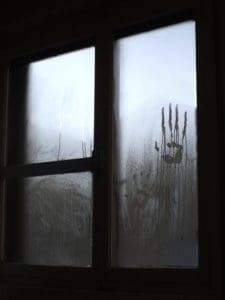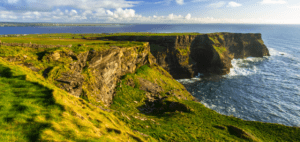Bolivian Salt Flats: A Mirror to the Sky — Nature’s Grand Illusion
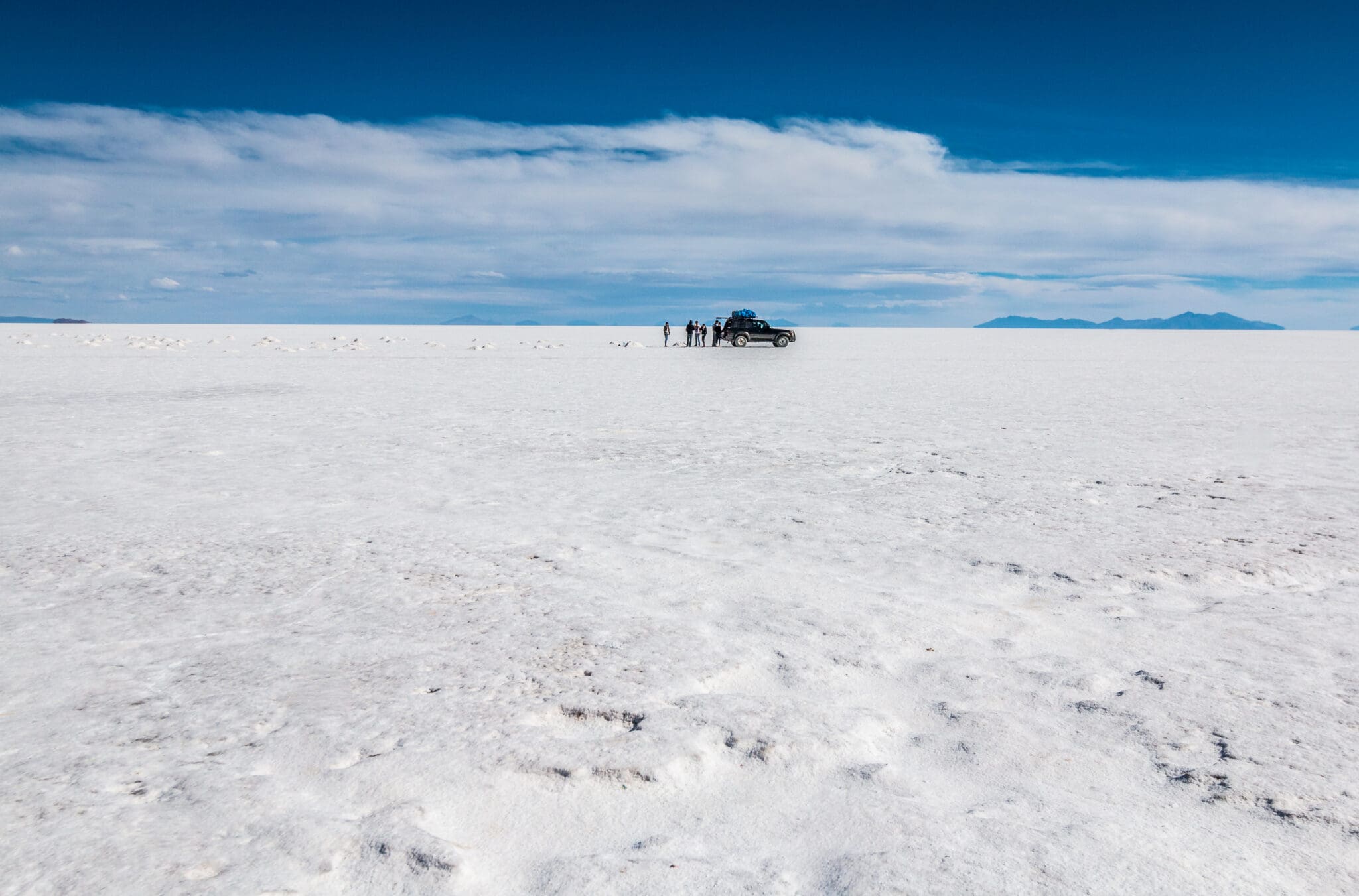
Updated On: April 23, 2024 by Raghda Elsabbagh
Nestled high in the Andes of southwest Bolivia lies Salar de Uyuni, the world’s largest salt flat, offering a panorama that defies the senses. Stretching over 10,000 square kilometres, this expansive landscape transforms into a mirror to the sky during the rainy season, when a thin layer of water turns the flats into a near-perfect reflection of the heavens above. This phenomenon draws travellers from around the globe, all eager to witness a natural spectacle where the horizon blurs, merging earth and sky into a dreamlike vista.
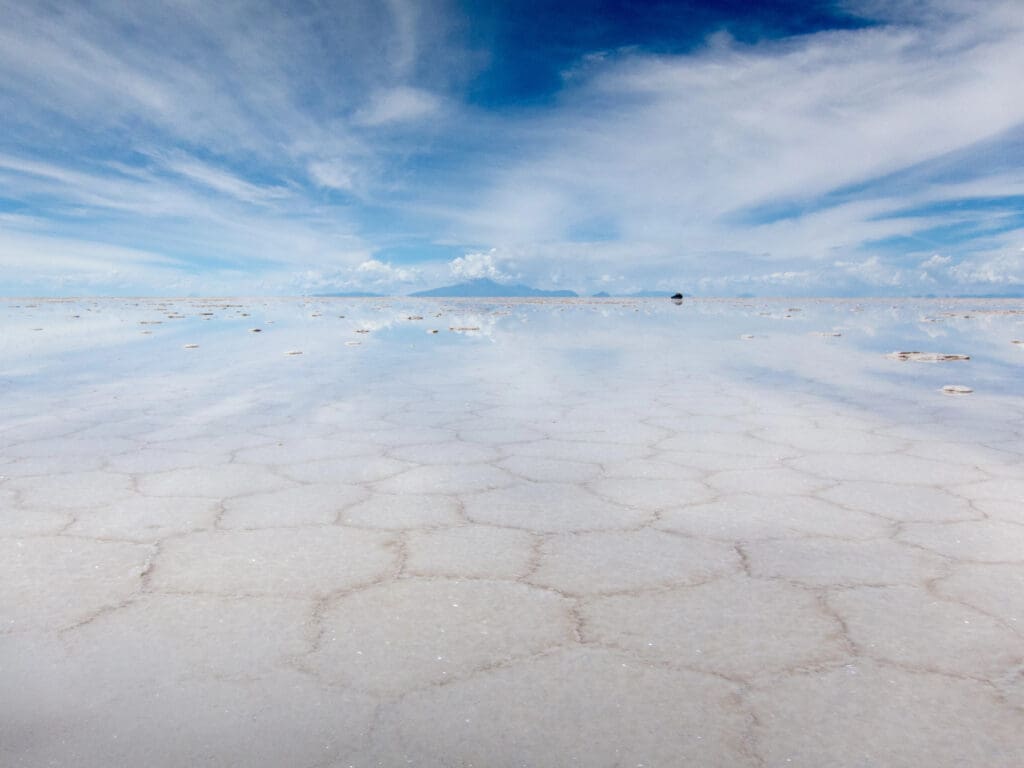
The allure of the Bolivian salt flats extends beyond mere aesthetics. Salar de Uyuni is an integral aspect of Bolivia’s geography and has played a pivotal role in its cultural history. In addition to creating mesmerizing reflections, the flats are also home to unique flora and fauna adapted to this extraordinary environment. Furthermore, the region’s importance to tourism and local economies cannot be understated, with visitors seeking out both its natural beauty and the hospitality offered by nearby accommodations and amenities. Despite its increasing popularity, ensuring conservation efforts remains paramount to protect this extraordinary site for future generations.
Table of Contents
Geographical Setting
In the heart of South America, Bolivian Salt Flats offer a unique perspective on nature’s magnificence. This geographical marvel, known for creating surreal reflections of the sky, is ensconced within the high plains of the Altiplano region and is a prime example of nature’s artistry.
The Altiplano Region
The Altiplano, a broad high plateau, forms the western thrust of Bolivia and is one of the largest areas of high plateau on Earth outside Tibet. Extending into neighbouring countries, this region is framed by the mighty Andes Mountains and is characterised by its vast, arid landscapes. La Paz, renowned as the world’s highest capital city, typifies the dramatic altitudes of the Altiplano, affording expansive views of the craggy mountain peaks that surround it.
Location and Accessibility
Salar de Uyuni, situated in the Altiplano region in the southwest of Bolivia near the crest of the Andes, sits at an altitude of roughly 3,656 metres. It is accessible from multiple points, including the small town of Uyuni itself, which serves as a popular starting point for tours. Travellers can also reach the salt flats from San Pedro de Atacama in Chile, emphasising the cross-border allure of this geographical marvel.
Historical and Cultural Significance
The vast expanse of Salar de Uyuni is not only a natural phenomenon but also a canvas of history and culture. We shall explore its prehistoric origins and cultural remnants, offering a glance into a past that has shaped this unique Bolivian landscape.
Prehistoric Lakes
Our journey through history begins with the transformation of prehistoric lakes that once covered the Salar de Uyuni. With origins dating back to Lake Minchin around 40,000 years ago, and later Lake Tauca, these vast water bodies laid the foundation for what would become the world’s largest salt flat. The evaporation of these lakes left behind rich mineral deposits and a salt crust that spans more than 10,000 square kilometres, predominately within the Potosí Department.
The Train Cemetery
Adjacent to the salt flats, the Train Cemetery stands as a cultural relic, echoing the once-thriving mining industry in Bolivia. Located near the town of Uyuni, this site is where retired locomotives and carriages come to rest, a testament to the region’s bygone era. The railway was intended to serve the mining industry, but due to a combination of technical difficulties and social unrest, many trains were abandoned, leaving these massive steel constructs to be slowly reclaimed by the salt winds. This graveyard of trains tells the silent stories of economic growth, decline and the irrevocable alterations to a landscape moulded by human ambition.
Climate and Seasons
In Bolivia, the Salar de Uyuni stands as a testament to natural wonders, and its climate is distinctively marked by two main seasons, which deeply impact the overall experience for visitors.
The Dry Season
May through October: This is the period marked by clear skies and a lower likelihood of rainfall, ideal for those looking to explore the vastness of the salt flats undisturbed by rain. The surface becomes hard, and the hexagonal patterns of the salt crust are a mesmerising sight. With temperatures that can drop below freezing at night, it is crucial for visitors to prepare warm clothing.
The Wet Season
November through April: The wet season can transform the salt flats into a giant mirror, creating the iconic reflective effect that captures the sky on the ground, a phenomenon most pronounced in January. This is considered by many as the best time to visit for photographers and those wishing to witness this surreal landscape. However, access to some areas may be limited due to the water coverage.
The Flora and Fauna at the Bolivian Salt Flats
In the ethereal expanse of the Bolivian Salt Flats, the vibrant wildlife and unique vegetation form an ecological tapestry that contrasts strikingly with the stark white plains. Amidst this surreal landscape, life thrives in forms both resilient and rare.
Wildlife Reserves
Salar de Uyuni serves as more than just a breathtaking natural wonder; it’s a sanctuary to various species that have adapted to the high-altitude environment. The Reserva de Fauna Andina Eduardo Avaroa, one of the key wildlife reserves, is home to the iconic Andean flamingos. These majestic birds paint the sky with shades of pink as they flock around the shallow waters. Moreover, the elusive vicuña, a relative of the llama, roams the periphery of the salt flats, its fine wool is a key resource for local communities.
Unique Vegetation
Amidst the saline crust of the Salar, unique vegetation, such as the giant cacti found on Isla Incahuasi, dot the landscape. These cacti emerge as stoic sentinels, some reaching up to 12 meters in height and are estimated to be over a century old. Their presence is a testament to life’s tenacity within this seemingly inhospitable terrain. Alongside the larger vegetation, smaller cacti and hardy shrubs contribute to the sparse but striking flora that has adapted to survive with minimal moisture.
Natural Wonders
In the heart of South America, Bolivia presents one of the most extraordinary spectacles on the planet. Here, the Uyuni Salt Flats create a stunning display of natural beauty and geological phenomena.
Mirror-Like Salt Flats
The Salar de Uyuni is not merely the world’s largest salt flat; it is a place where the sky and earth converge, delivering the renowned mirror effect that fascinates visitors from around the globe. During the wet season, a thin layer of water transforms the flats into a reflective surface, creating the illusion of a vast mirror that perfectly captures the image of the sky above.
Volcanic Activity
Amidst this breathtaking landscape lie signs of potent volcanic activity. The region hosts numerous geysers, smoking fumaroles, and dormant volcanoes, evidence of the dynamic earth forces at play. Adventure-seekers are drawn to these volcanic sites where the earth’s power is palpable. Additionally, the area is peppered with high-altitude lakes, their mineral-rich waters painting a canvas of vivid colours against the stark white of the salt flats.
Tourism and Recreation
The Salar de Uyuni is a truly unique destination for tourists, offering experiences like guided tours to witness its vast, mirror-like surface and the opportunity to capture stunning photographic memories thanks to the extraordinary play of light and perspective. We will explore these pursuits that draw visitors from all corners of the globe.
Guided and Private Tours
Whether you’re interested in a guided group experience or a more intimate private tour, options are plentiful. Most tours originate from the town of Uyuni and can last a single day or span several days, typically including visits to the train cemetery, Colchani village, and the salt flats themselves. For those seeking exclusivity, private tours are readily available, offering a bespoke adventure that ranges from basic to luxury, tailored to your interests. Some visitors may be keen to know that certain tours offer specialised experiences, such as tracing locations where scenes from Star Wars: The Last Jedi were filmed amid the salt flats’ otherworldly landscape.
Photography and Perspective
One of the key attractions is the use of the salt flat’s reflective surface for creative photography. The rainy season from December to April transforms the Salar into the world’s largest natural mirror, perfect for capturing surreal images with a beautiful blend of sky and earth. Be it a classic perspective trick, a reflection shot, or the breathtaking starry night skies, photographers, amateurs, and professionals alike find a canvas like no other. Tour guides often assist visitors in achieving the best photographic angles and are versed in the tricks that play with perspective, creating those viral images that seem to defy reality.
Accommodation and Amenities
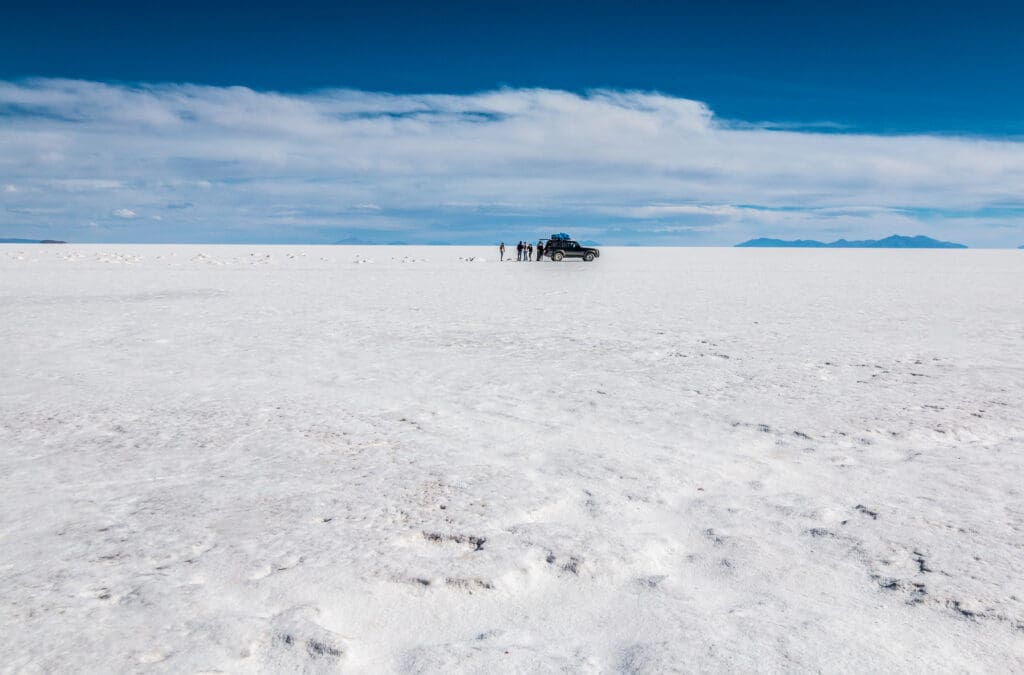
When planning a visit to the Bolivian Salt Flats, also known as Salar de Uyuni, looking into comfortable accommodation and appreciating the unique local cuisine are necessary parts of the experience. Visitors can choose from a range of options, from salt hotels constructed from the very salt crystals that make the flats so magical to dining spots offering regional Bolivian flavours.
Salt Hotels
Among the most unique places to stay are the salt hotels, where the walls, floors, and sometimes even the furniture are made of salt bricks. The Hotel Palacio de Sal is known for being one of the first hotels in the world built entirely out of salt. Its facilities include a restaurant, a bar, and a spa, all crafted with the unique saline architecture. Casa de Sal offers a unique experience near the plaza with modern amenities for those looking for a comfortable stay.
Local Cuisine
Indulging in the local cuisine is an adventure in itself at Salar de Uyuni. The on-site restaurants of the salt hotels, such as the one at Palacio de Sal, serve a variety of dishes that often incorporate locally sourced quinoa and Bolivia’s pink salt. The Kusina, a local eatery, is a great place to try traditional Bolivian dishes, while Kusku delivers a more contemporary take on regional specialities. Dining here not only pleases the palate but also provides a deeper connection with the culture of the high Andean plains.
Conservation and Environmental Impact
In the stark, breathtaking landscapes of Bolivia’s Salar de Uyuni, conservation and the environmental impact of human activities, particularly lithium extraction, come to the forefront.
Lithium Extraction
The Salar de Uyuni not only captivates with its ethereal beauty but also houses one of the world’s largest lithium reserves. Lithium, a crucial element in batteries for electronic devices and electric vehicles, is abundant here. The extraction process, however, raises environmental concerns. It involves pumping saline groundwater, which can cause a depletion of the water table and lead to the alteration of the unique ecosystem. Our responsible management of these lithium deposits is crucial to minimise ecological disruption.
Wildlife Protection
The salt flats are home to a range of wildlife, including the Andean flamingo, which relies on the region’s wetlands. The booming lithium industry’s impact on wildlife habitats is a cause for concern. Protective measures must focus on ensuring that animal populations are safeguarded against habitat loss and contamination. We aim to balance the advancement in lithium extraction with robust conservation strategies, ensuring that the natural inhabitants of the Salar de Uyuni thrive alongside sustainable progress.
Safety and Travel Tips
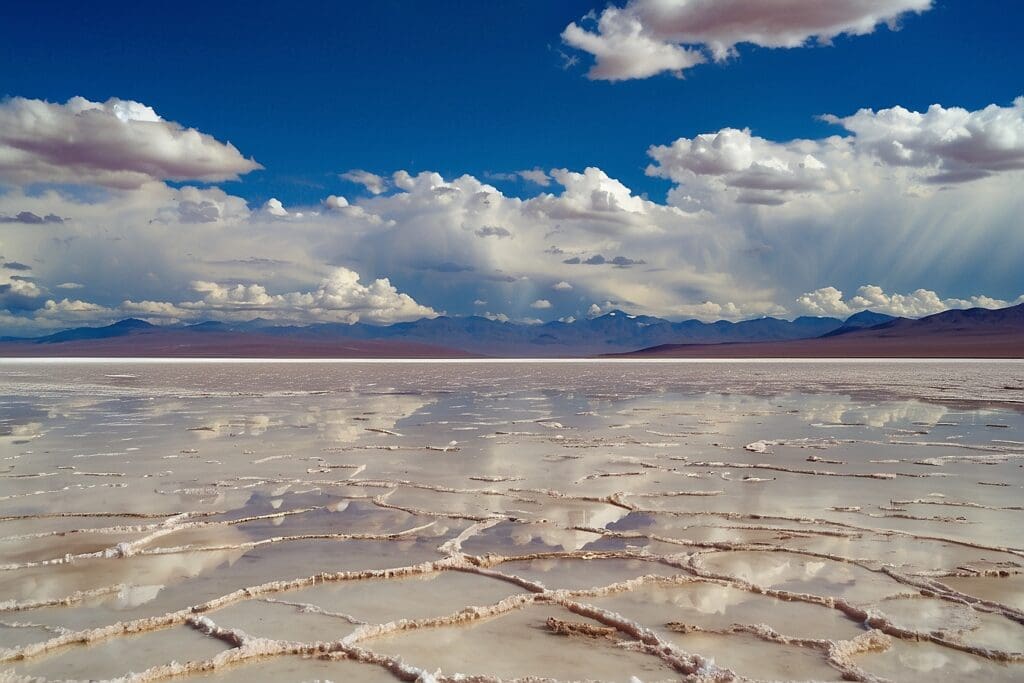
When venturing to the Bolivian Salt Flats, safety should be your top priority. We’ll cover the essential considerations around altitude and how to navigate this vast landscape effectively.
Altitude Considerations
High-altitude destinations like the Salt Flats can cause altitude sickness. To minimise risk, acclimatise for a few days before heading to the flats. Symptoms include headache, nausea, and dizziness; take these seriously. It’s wise to carry medicines after consulting with a healthcare provider and ensure you have access to oxygen if needed. Dressing in warm clothing is crucial as temperatures can plummet, especially overnight.
Navigation and Communication
The vast expanse of the Salt Flats necessitates reliable navigation tools. A GPS device is essential for finding your way, as landmarks are scarce. However, technology can fail, so traditional navigation methods and paper maps should also be on hand. An English-speaking guide can be invaluable not only for communication but also for their knowledge of the terrain. Stay connected with reliable communication devices, and consider satellite phones, which are more reliable in remote areas. If planning to stay overnight, a sturdy sleeping bag is recommended to endure the cold.
Local Legends and Myths
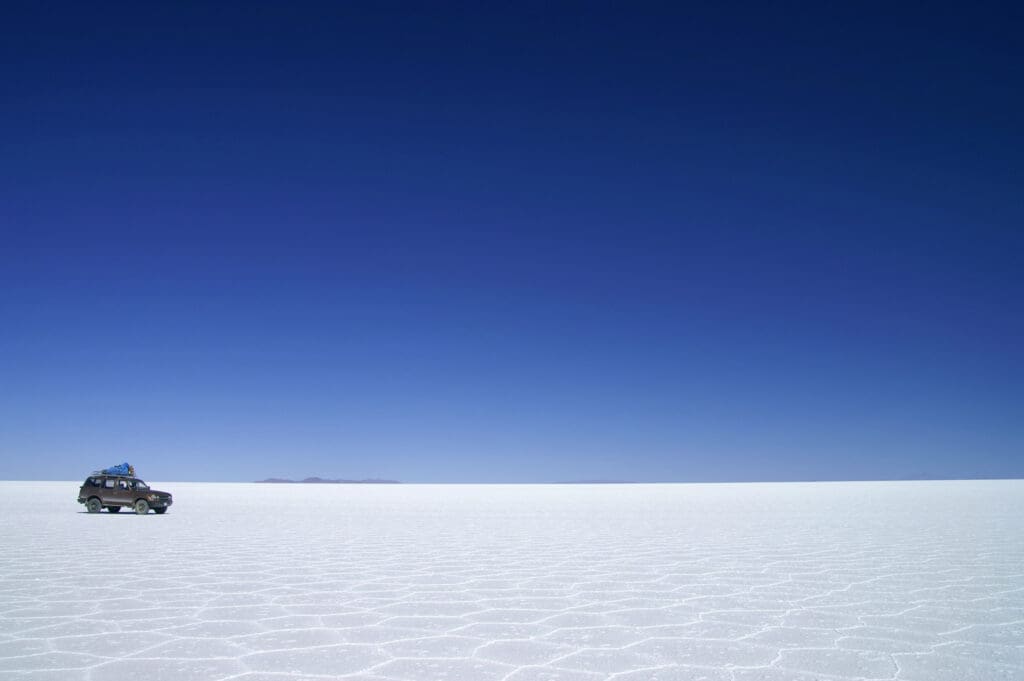
The Salar de Uyuni is not only known for being one of the flattest places on Earth and creating breathtaking optical illusions but it is also steeped in local legend. Among the most captivating tales is that of Tunupa, an ancient deity linked to the creation of this natural wonder. It is said that the surrounding mountains were once magnificent giants. Tunupa is often depicted as a heartbroken figure whose tears blended with milk to form the vast salt flats.
Myths surround the flat’s mirror-like qualities, especially during the wet season when the thin layer of water over the flats creates an almost perfect reflection of the sky. These are not merely tricks of light for locals but the integration of sky and earth, which play a significant role in Andean cosmology.
| Entity | Role in Legends |
|---|---|
| Tunupa | The tragic hero linked to the creation of the flats |
| Optical illusions | Seen as earthly bonds with the cosmos |
We often find within these legends a moral or symbolic lesson that speaks to the values and beliefs of the local people. Though we may not hold these legends as literal truths, they serve as a testament to the cultural richness that thrives alongside the natural beauty of the Bolivian Salt Flats.
Economic Aspects
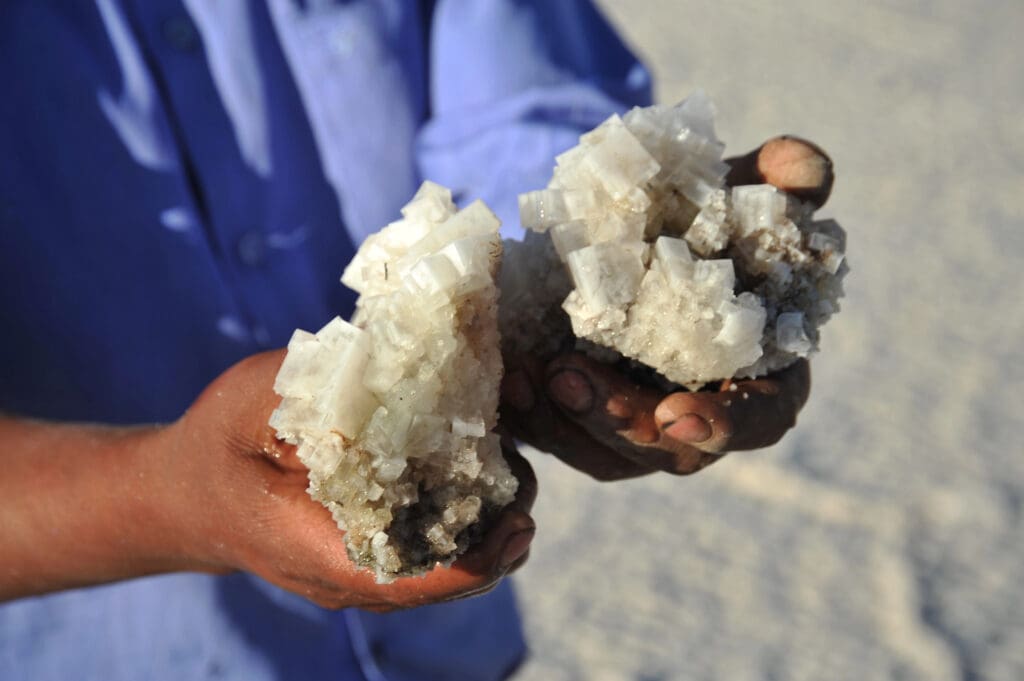
In examining the economic impact of the Uyuni Salt Flats, it’s crucial to consider both the salt production and the substantial tourism revenue generated by this unique destination.
Salt Production
At the heart of Bolivia’s salt flats lies an industrious operation dedicated to salt extraction. The salt crust covers an area in excess of 10,000 square kilometres, with an estimated 10 billion tons of salt. Annually, thousands of tons are processed and shipped to various industries, where it’s utilised for both culinary and industrial purposes. The methodical harvesting of salt supports the local economy and provides an essential resource that is integral to Bolivia’s economic fabric.
Tourism Revenue
The Uyuni Salt Flats have become a lustrous tourist attraction, drawing visitors from around the globe due to their otherworldly landscapes and the captivating mirror effect seen during the wet season. Tourism significantly bolsters our national income, with the flats offering a multitude of activities, including 4×4 tours and visits to neighbouring islands dotted with cacti. The influx of tourists has fostered the growth of local businesses, hotels, and restaurants, making tourism a cornerstone of our economic growth in the region.
Frequently Asked Questions
As we explore the unique landscapes of the Salar de Uyuni, here are some of the most common inquiries about this natural wonder.
How does the Salar de Uyuni create its mirror-like effect?
During certain seasons, a thin layer of water covers the very flat expanse of the Salar de Uyuni, turning the salt flat into a sky mirror, where the clear sky and even distant objects are reflected with stunning clarity.
What is the best time of year to visit the Bolivian salt flats for optimal reflection?
The wet season, from December to April, is when you are most likely to witness the salt flats’ transformation into a vast mirror, perfectly reflecting the sky and creating a horizonless landscape.
Can you observe the starry sky reflected on the surface of the salt flats at night?
Although primarily renowned for its day-time reflections, when conditions are right, the Salar de Uyuni can also reflect the starry sky at night, offering a mesmerising experience of the cosmos mirrored underfoot.
What are the dimensions of the Salar de Uyuni, and how does it compare in size to other salt flats?
The Salar de Uyuni is the world’s largest salt flat, spanning over 10,500 square kilometres. Some areas have a salt layer over 10 meters thick, vastly exceeding the dimensions of other salt flats around the globe.
Are there specific tours recommended for experiencing the mirror effect at Salar de Uyuni?
Several tours cater to experiencing the Salar de Uyuni’s mirror effect, ranging from one-day excursions to longer adventures. The starting points for these tours can vary, but Uyuni town is the most common and convenient launching spot.
What causes the reflective water layer on the Salar de Uyuni?
The reflective layer is the result of summer rains, which flood the salt crust, leaving a thin sheen of water that creates the illusion of the Earth and sky becoming one endless surface.


